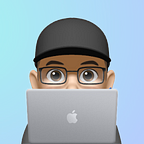Final Design Solution
Our design constitutes of two parts, a physical room with interactive whiteboards/tables and an accompanying online platform that could also be accessed elsewhere.
The integrated workspace is intended for students in PBL courses to use in work sessions. They can meet in the room for their research, ideation, and prototyping phases in their project. They can use the whiteboard and the table to take notes of their ideas and save them for future reference. The voice recorders and cameras in the room can help them also document their work process.
The online platform could be accessed from the room or from any computer connected to the internet at any time. The students can use this platform for organizing their work artifacts and for collaborations.
Features
Project Timeline — Project Management Skills
At the start of each project, the students will be prompted to plan their project ahead by creating milestones and checkpoints on the project timeline. By planning their projects ahead, the students will gradually practice their project management skills.
Screenshot, Pictures, and Videos — Documentation Skills
Students will get into the habit of documenting their work in an organized place. They could save their work artifacts on the whiteboard using the screenshot feature. The screenshot feature will convert their drawing and physical sticky notes to digitized forms to be saved for future use. In this way, the students will not lose the documentation of their ideas.
Students can resume their saved past work on the whiteboard or table easily. By choosing the past work file, the file will be projected back onto the whiteboard/table so the students can continue working on it.
The pictures and videos feature can help the students document their work process. The documentation of the work process can be a source for meta-procedural reflections that could help the students improve in PBL courses.
AR Overlay — Scaffolding for Prototyping
As students work on the interactive table, the table can provide an AR overlay with enriched information to help the students finish their prototypes.
Reflection Prompts — Self-Reflection Skill
The system will scaffold the students for self-reflection. It will prompt the students with some reflection questions at the end of the work sessions. Students can draw, type, or use their voice for their reflections. Their reflections will be saved to their timeline. This optional reflection prompt will help the students to get into the habit of reflecting on their own work, honing their meta-cognitive skills.
Instructor View — Viewing and Commenting Student work
The instructor can view the students’ work on the online platform anywhere. The students' files will be organized on the timeline so it’s easy for the instructor to find them.
With organized documentation of both students’ work artifacts and students’ work process, the instructor can better assess the quality of students’ work and student contributions.
The instructor can also make comments on students’ work by typing or voice recording.
Considerations for Implementation
In this section, I will discuss a little bit about the potential technologies for implementing the solution.
For showing the screen on the interactive whiteboard/table, one can use overhead projectors, laser projections, or backlit LED panels. We recommend the backlit LED panels for the following reasons. First, LED panels are relatively cheaper than projectors. Second, the projectors will have issues of misalignment when they are moved frequently. Third, projectors will create shadows when the students are in the way of the projection.
For detecting touches and movements on the table, the possible technologies are infrared touch frames, Kinect, or computer vision (CV)using the overhead camera. We recommend the infrared touch frames. They are cost-effective and can be easily customized to be integrated with the LED panels. Kinect and CV will sometimes have inconsistency and are more difficult to implement.
For screenshotting, image-to-scan will be the solution. The edges of the raw image from the overhead camera will be detected and cut out. The resulting image will be warped and enhanced. An example of the Python implementation of this feature can be found here.
